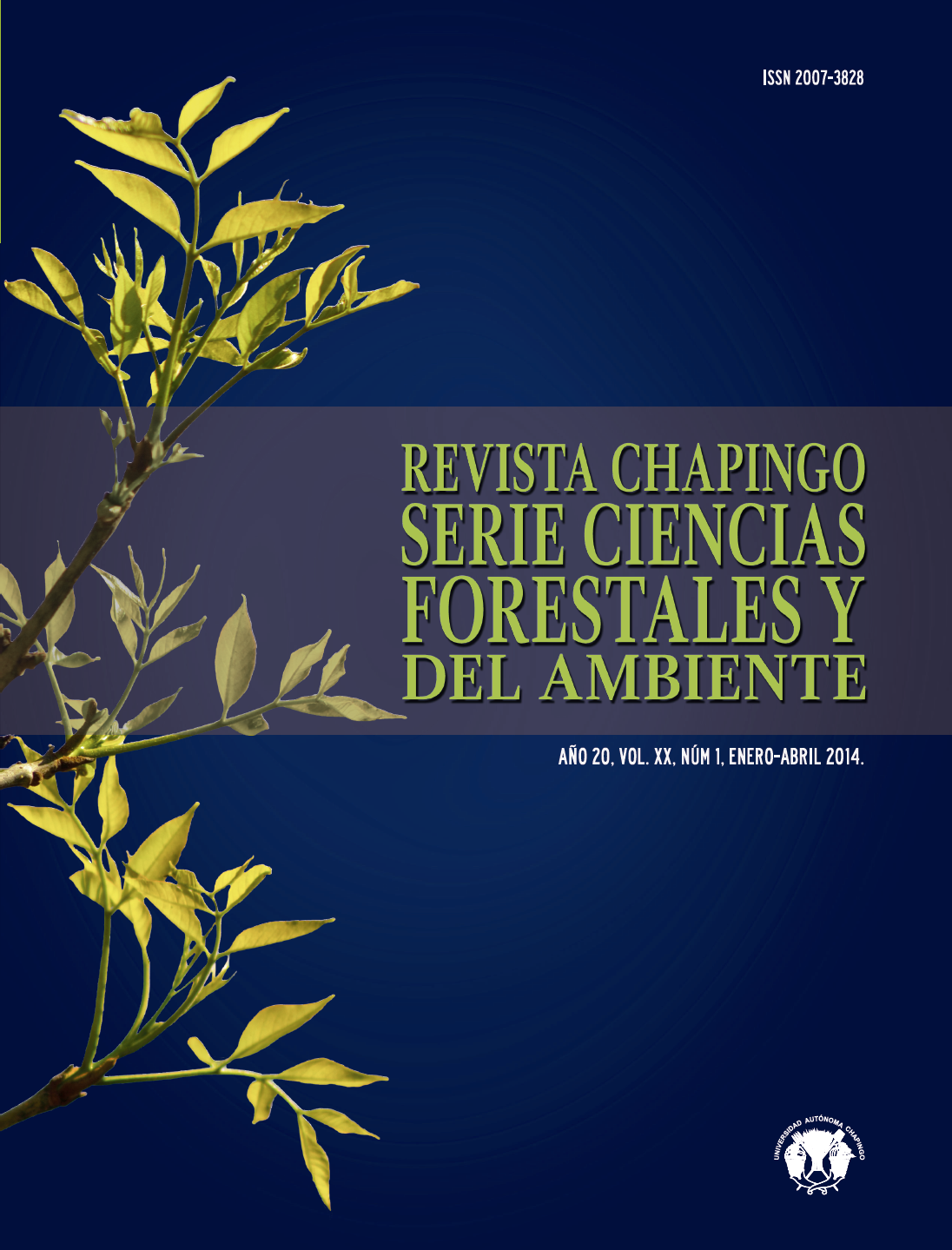Abstract
This study provides an economic evaluation of the response to planting densities and spacing patterns in Eucalyptus globulus planted for pulping. The Monte Carlo technique was used to examine the effect of price variations and the discount rate on profitability. The trial was carried out in the Central Valley of the IX Region of Chile. The treatments (T) were: 1,000 trees·ha−1 (T1); 1,428 trees· ha−1 (T2); 1,667 trees·ha−1 (T3); and 2,000 trees·ha−1 (T4). The production volume of each treatment was measured at harvest age (10 years), and then a financial analysis was made to obtain the profitability (present net value, PNV; economic land value, ELV; and internal rate of return, IRR). The highest PNV values were obtained with T1 (330 US$·ha−1) and T4 (322 US$·ha−1). The predictions obtained for the PNV of T1 showed a probable occurrence of 73 %, making it the least risky investment option. Higher volumetric yields (T4 and T3) do not lead to higher profitability, since the increase in planting density leads to an increase in the unit cost per plant for land management, weed control and fertilization.
References
Amram, M., & Kulatilaka, N. (1999). Disciplined decisions: Aligning strategy with the financial markets. Harvard Business Review, 77, 95–104.
Asnake, A. (2006). Yield and economics of growing Eucalyptus camaldulensis by smallholder farmers of Amhara region: The case of Gondar Zuria District, North Gondar Ethiopia. European Tropical Forest Research Network, 47, 123– 144. http://www.etfrn.org/etfrn/newsletter/ news4748/nl47_oip_21.htm#up
Bailey, R. (1986). Rotation age and establishment density for planted slash and loblolly pines. Southern Journal of Applied Forestry, 10, 162–168.
Brealey, R., Myers, S., & Allen, F. (2006). Principles of corporate finance (8th ed.). Boston, USA: McGraw-Hill. http://es.scribd.com/doc/7273322/Principles-of-Corporate-Finance
Centro de Información de Recursos Naturales (CIREN). (2002). Estudio agroecológico de la IX Región. Santiago, Chile: Autor.
Chacón, I. (1995). Decisiones económico financieras en el manejo forestal. Ciencia y tecnología. Talca, Chile: Universidad de Talca.
Díaz-Balteiro, M., & Rodríguez, L. (2007). Análisis no determinista del turno óptimo en plantaciones de Eucalyptus globulus Labill. Boletín del CIDEU, 3, 139–143. http://www.uhu.es/cideu/Boletin/Boletin3/BolInf3CIDEU139-143.pdf
Geldres, E., & Schlatter, J. (2004). Crecimiento de las plantaciones de Eucalyptus globulus sobre suelos rojo arcillosos de la provincial de Osorno, Décima Región. Bosque, 25(1), 95– 101. doi: https://doi.org/10.4067/S0717-92002004000100008
Guerra, E., Herrera, M., & Drake, F. (2010). Efecto de los sistemas de riego en la rentabilidad de plantaciones de eucalipto (Eucalyptus globulus). Agrociencia, 44, 99–107. http://www.colpos.mx/agrocien/Bimestral/2010/ene-feb/art-10.pdf
Hänninen, R., Mutanen, A., & Toppinen, A. (2006). Puuntarjonta Suomessa-aluetason ekonometrinen tarkastelu 1983-2004. Finland: Forest Research Institute. http://www.metla.fi/julkaisut/workingpapers/2006/mwp029.pdf
Instituto Forestal (INFOR). (1995). Primeros resultados en un ensayo de espaciamiento, poda y raleo con Eucalyptus globulus en Constitución (VII Región). Santiago, Chile: División Ordenación Forestal e Inventarios.
Instituto Forestal-Corporación de Fomento de la Producción (INFORCORFO). (1991). Eucalyptus. Principios de silvicultura y manejo. Santiago, Chile: División Ordenación Forestal.
Jobet, J. (1999). Efecto del espaciamiento inicial sobre el crecimiento y rendimiento de Eucalyptus nitens plantado en suelos de trumao. Silvotecna, 12, 80–104.
Kongsom, C., & Munn, I. (2003). Optimal rotation of Eucalyptus camaldulensis plantations in Thailand based on financial return and risk. Thai Journal of Forestry, 22, 29–35. http://sofew.cfr.msstate.edu/papers/0246kongsom.pdf
Laborde, P. (2004). Métodos prácticos de determinación de tasa de descuento. Diario financiero. Management. Finanzas para emprendedores, 11, 10–13.
Martínez, R., Azpiroz, H., Rodríguez, J., Cetina, V., & Gutiérrez, M. (2006). Importancia de las plantaciones forestales de Eucalyptus. Ra Ximhai, 2, 815–846. http://www.revistas.unam.mx/index.php/rxm/article/view/6903
Ministerio de Agricultura de Chile (MINAGRI). (1974). Decreto Ley 701 sobre fomento forestal. Santiago, Chile: Autor.
Miranda, I., Almeida, M., & Pereira, H. (2000). Provenance and site variation of wood density in Eucalyptus glogulus Labill. at harvest age and its relation to a non-destructive early assement. Forest Ecology and Management 149, 235–240. doi: https://doi.org/10.1016/S0378-1127(00)00560-0
Montagu, K., Kearney, D., & Smith, G. (2003). Pruning eucalypts: The biology and silviculture of clear wood production in planted eucalypts. Australia: Rural Industries Research and Development Corporation.
ORACLE (2012). Oracle Crystal Ball 11.1. http://www.oracle.com/technetwork/middleware/crystalball/downloads/index.html
Sapag, N. (2003). Preparación y evaluación de proyectos (3a ed.). Bogotá, Colombia: Mc Graw Hill Interamericana S. A.
Whittock, S., Greaves, B., & Apiolaza, L. (2004). A cash flow model to compare coppice and genetically improved seedling options for Eucalyptus globulus pulpwood plantations. Forest Ecology and Management, 191(1-3), 267–274. doi: https://doi.org/10.1016/j.foreco.2003.12.013

This work is licensed under a Creative Commons Attribution-NonCommercial 4.0 International License.
Copyright (c) 2014 Revista Chapingo Serie Ciencias Forestales y del Ambiente



